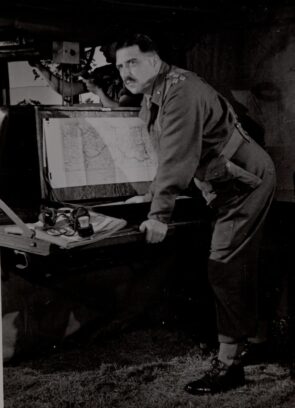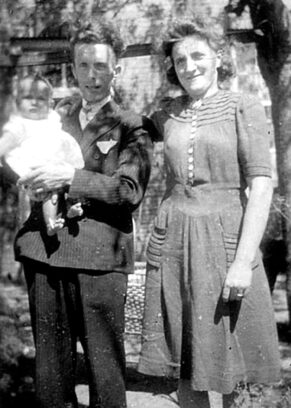Books
Feature
Holocaust Books by and About Hadassah Members
“Jews remember! Jews write!” These were the dying words of Simon Dubnow, the great Jewish historian, murdered by a Gestapo officer on a Riga street in 1941. His stirring mandate has been adhered to by generations of post-Holocaust authors who mined the darkness for acts of humanity that offer hope and optimism. Their narratives, describing the compassion and courage of saviors and survivors, comprise an invaluable literary legacy.

Years before Dubnow’s death, in a riveting speech at the Hebrew University of Jerusalem, Henrietta Szold, Hadassah’s founder, stressed the importance of “…all that is genuine in study, all who crave knowledge in truth and sincerity.”
Today, knowledge, sincerity and a drive to disseminate truth inform books about the Holocaust by Marty Brounstein, Meryl Ain and Bernice Lerner, writers with deep Hadassah connections as well as the inheritors of Dubnow’s mandate and Szold’s idealistic expectations.
Lerner, 65, a historian and former director of the ethics center at Boston University, has written a treatise of astounding depth about two individuals, one a victim, the other a liberator, caught up in the cruel maze of World War II. All the Horrors of War: A Jewish Girl, a British Doctor, and the Liberation of Bergen-Belsen (Johns Hopkins University Press) focuses on Rachel Genuth, a Jewish adolescent from Sighet, a town in then-Hungary, and Brigadier H.L. Glyn Hughes, deputy director of Medical Services of the British Second Army.
Adding to the poignancy of the account is that Rachel is Lerner’s mother. Rachel, now 91, took the name Ruth Mermelstein after she came to the United States and married. A member of Hadassah since 1957, she also gifted her daughter with a life membership.
It was Lerner’s research into her mother’s wartime trauma that led her to Dr. Hughes, the man most prominently associated with the liberation of Bergen-Belsen. Rachel and the British army doctor never met, but their tandem stories reflect the courage that propelled them both through, as Lerner’s title says, “all the horrors of war.”
Rachel endures hunger and hardship during the war and, ultimately, is interned in Bergen-Belsen. Days before the liberation of the concentration camp, Rachel is stricken with tuberculosis. As she lies close to death, her fate and Dr. Hughes’s heroic efforts converge.
Upon seeing the conditions of the interned prisoners, “…his eyes welled with tears. The ‘tough and ruthless’ doctor cried like a child,” Lerner writes of Dr. Hughes, a medical warrior whose bravery earned him multiple military honors, including two Distinguished Service Orders. Insisting that “the dictates of humanity demand action,” he created field hospitals in Bergen-Belsen. Rachel, who was treated in one of those facilities, and her sister, Elizabeth, were the only members of their family to survive the war.

In retelling her mother’s story, Lerner finds parallels in Hadassah’s role in bringing 15,000 surviving teenagers after the war to Palestine through Youth Aliyah. “The education they received and the bonds forged in Hadassah’s youth villages remind me of my mother’s experience” as a 15-year-old in Sweden, Lerner said in a phone interview from her home in Boston.
“My mother was among the 7,000 sick survivors of Bergen-Belsen who were brought to Sweden to convalesce,” the author continued. “Special schools were set up for these refugee children…. The teachers, most of whom were survivors (and Zionists), well understood the trauma and loss their students had suffered; they taught academic subjects, but also life lessons, fortifying these young people for the future.”
Marty Brounstein grew up with Hadassah. His grandmother Sarah Goldberg was a Hadassah pioneer in the northern reaches of Saskatoon, Canada; when she died in 1952, the local chapter was named after her. His mother, Goldie Brounstein, started a chapter in Chicago. The family, including his two sisters and their children, continues to be active in the organization today.
In The Righteous Few: Two Who Made a Difference and Woman of Valor: A Story of Resistance, Leadership & Courage (both from Square One Publishers), Brounstein, who passed away in July 2020 at the age of 63, shares true stories of perseverance and self-sacrifice.
The Righteous Few describes the courage of Frans and Mien Wijnakker, devout Catholics and the parents of four children. At great personal risk, the couple hid Jewish escapees in their home in the rural Dutch town of Dieden during the Nazi occupation of Holland. Husband and wife Louis and Engelien Baars were among those concealed by the Wijnakkers. When Engelien gave birth in hiding, Mien daringly told curious neighbors that she was the mother of Engelien’s infant, a secret maintained until the end of the war to protect the Baars. The rescued baby was Leah Baars, who became Marty Brounstein’s wife. (Leah is also a Hadassah life member.)
The Wijnakkers saved two dozen Dutch Jews over the course of the war and were honored as Righteous Among the Nations at Yad Vashem in Jerusalem.
The extraordinary life of Eta Chait Wrobel, partisan, activist and Hadassah member, is the subject of Woman of Valor. The book describes how the Nazis forced Eta, then a young woman, her family and the rest of the Jews of Lukow, Poland, into a ghetto. Eta escapes and joins a resistance group, eventually becoming a partisan leader. After the Communist takeover of Poland, Eta left for America with her husband, Heniek Wrobel. The couple moved to New York City, where Eta, who passed away in 2008 at the age of 92, helped found a Hadassah chapter whose membership was comprised of Holocaust survivors in New York, New Jersey and Connecticut.
The Takeaway Men (spark Press), Meryl Ain’s debut novel, reflects her lifelong interest in the Holocaust, encouraged by childhood encounters with survivors over whom “the cloud of the Holocaust lingered,” the 70-something writer and educator said in a phone interview from her Long Island home.
Set in 1950s America, The Takeaway Men introduces readers to twin sisters Bronka and Johanna, born in a displaced persons camp, and their Polish parents, Aron and Edyta. On arrival in New York, the family is welcomed by their American relatives, Izzy and Faye, proprietors of several bake shops in Queens.
Raised in a sheltered Jewish community, the twins are denied knowledge of the Holocaust by their parents, supposedly for their own protection. Ain recreates the ambience of that decade with attention to details such as the emergence of television and the iconic Howdy Doody and Ed Sullivan shows as a focus of family life.
A number of events as the twins grow, including the revelation that one of their teachers is a survivor, ignite the sisters’ curiosity, and soon they start to unravel the mystery of their parents’ past.
Jewish communal responsibility is emphasized throughout the novel, as Ain describes neighbors’ support for each other. Faye’s involvement in her Hadassah group is one example of the altruism of Jewish women in the 1950s as well as an acknowledgement of Hadassah’s crucial work during that era.
After World War II, explained Ain, herself a life member, “Faye’s chapter would have been raising funds for Ramat Hadassah Szold,” a Youth Aliyah village southeast of Haifa that took in refugee children from Yemen and educated young survivors.
“Faye was a balabusta and ran a business with her husband,” said the author. “But she still found time for the important work of Hadassah.”
These extraordinary books are a reminder of the courage of those who confronted the forces of evil during and after World War II. They also serve as insight into the lives and legacies of a number of Hadassah members and authors who are sharing stories of truth, determination and compassion.
Gloria Goldreich’s newest book is The Paris Children.














 Facebook
Facebook Instagram
Instagram Twitter
Twitter
Leave a Reply